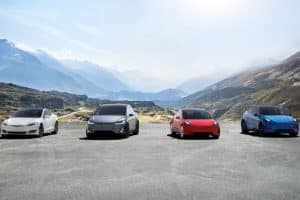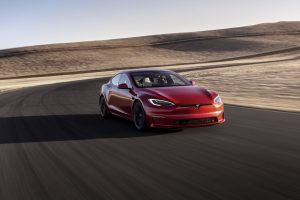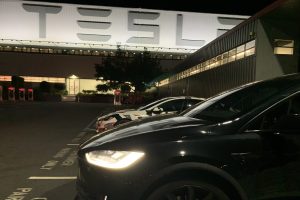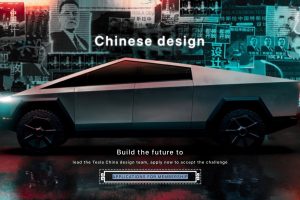- 🚗 Automakers like Ford and GM have no plans to change course despite Tesla’s decision to slow down Supercharger expansion.
- ⚠️ Tesla’s decision to cut staff from the Supercharger team and slow down new station installations has created uncertainty for automakers adopting Tesla’s charging standard (NACS).
- 🔋 Automakers were relying on Tesla’s Supercharger network for public charging infrastructure as part of their EV plans.
- ❓ There are questions around Tesla’s strategy of focusing on existing Supercharger stations while more EVs from other brands will be fighting for the slowly growing number of stalls.
- 💰 Tesla’s decision to cut Supercharger expansion is part of a wider cost-saving plan that has impacted 14,000 jobs across the company.
- 👋 Tesla has lost several high-level executives recently, raising concerns about the company’s direction.
In the ever-evolving landscape of electric vehicles (EVs), Tesla has long been a trailblazer, setting industry standards and pushing the boundaries of innovation. However, the company’s recent decision to scale back its Supercharger expansion plans has sent ripples through the automotive industry, leaving automakers and EV enthusiasts alike pondering the potential consequences.
The NACS Conundrum: A Game of Charging Standards
Tesla’s North American Charging Standard (NACS) has emerged as a crucial player in the EV charging infrastructure game. Recognizing the importance of a unified charging ecosystem, several major automakers, including Ford and General Motors, have embraced NACS, paving the way for their EVs to seamlessly access Tesla’s vast Supercharger network.
This strategic move was intended to alleviate the pressing issue of public charging availability, a critical factor in the widespread adoption of EVs. By tapping into Tesla’s extensive network of Superchargers, these automakers aimed to provide their customers with a convenient and reliable charging experience, thereby removing one of the most significant barriers to EV adoption.
Tesla’s Strategic Shift: Reining in Expansion
However, Tesla’s recent decision to cut staff from its Supercharger team and significantly slow down the installation of new charging stations has introduced a new layer of uncertainty. This move, which is part of a broader cost-saving initiative that has impacted 14,000 employees across the company, has left many automakers and industry observers scratching their heads.
The Potential Impact on Public Charging Infrastructure
While Tesla’s CEO, Elon Musk, has stated that the company will continue to expand its Supercharger network, albeit at a slower pace, there are valid concerns about the long-term implications of this strategy. As more automakers adopt NACS and roll out their EV models, the demand for public charging infrastructure is poised to skyrocket.
With a growing number of EVs vying for a limited and slowly expanding network of Supercharger stalls, the potential for congestion and long wait times at charging stations looms large. This could undermine the very convenience and accessibility that automakers sought by embracing NACS, potentially hindering the widespread adoption of EVs.
The Talent Exodus: Cause for Concern?
Adding to the uncertainty is the recent departure of several high-level executives from Tesla, including those directly involved in the Supercharger program. This talent exodus has raised eyebrows within the industry, sparking speculation about the company’s long-term vision and commitment to its charging infrastructure.
While Tesla has remained tight-lipped about the reasons behind these departures, some industry analysts have expressed concerns that the company’s focus may be shifting away from its Supercharger network, potentially leaving automakers that have embraced NACS in a precarious position.
Navigating the Uncharted Territory
As the dust settles on Tesla’s strategic shift, automakers and industry stakeholders find themselves navigating uncharted territory. Some key considerations and potential paths forward include:
- Alternative Charging Solutions: Automakers may need to explore alternative charging solutions, such as partnerships with other charging networks or the development of their own proprietary charging infrastructure. While this could potentially fragment the charging ecosystem, it may provide a necessary backup plan to ensure reliable access to public charging.
- Lobbying and Policy Advocacy: Automakers and industry bodies may need to engage in lobbying and policy advocacy efforts to ensure that public charging infrastructure remains a priority for governments and regulatory bodies. Financial incentives, tax credits, and favorable policies could play a crucial role in accelerating the deployment of charging stations.
- Collaborative Approach: Instead of going it alone, automakers could explore collaborative approaches, pooling resources and leveraging collective bargaining power to negotiate favorable terms with charging network providers or even Tesla itself. A united front could potentially yield better outcomes for all stakeholders.
- Consumer Education and Awareness: Regardless of the path forward, automakers and industry leaders must prioritize consumer education and awareness campaigns. Addressing concerns about charging accessibility and alleviating range anxiety will be crucial for sustaining the momentum of EV adoption.
As the EV revolution continues to gain traction, the industry finds itself at a critical juncture. Tesla’s Supercharger strategy, while puzzling to some, may ultimately prove to be a catalyst for innovation and collaboration, driving the development of a robust and diversified charging infrastructure that caters to the needs of all EV drivers.
Only time will tell whether Tesla’s decision was a strategic gamble or a necessary course correction. What remains certain is that the future of electric mobility hinges on the collective efforts of automakers, policymakers, and industry stakeholders to forge a charging ecosystem that empowers consumers and propels the transition to a more sustainable transportation future.





